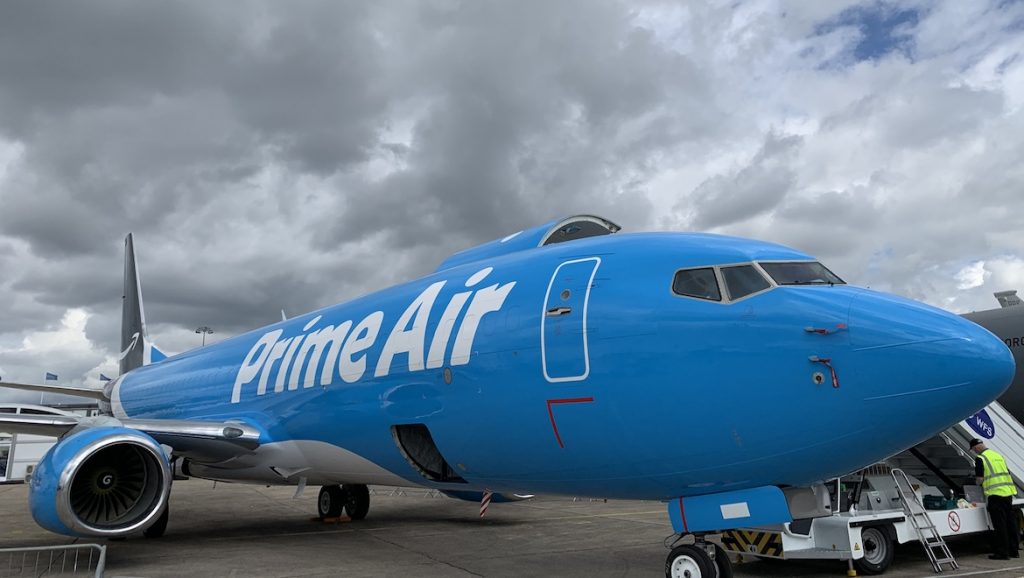
Airlines and aircraft lessors appear to be turning their sights to converting old passenger jets into freighters, as they bank on a post-COVID boom in e-commerce, and benefit from the falling price of used planes.
According to aviation analytics firm Cirium, the number of passenger-to-freighter (P2F) conversions around the world will increase by 36 per cent to 90 planes in 2021, and 109 planes in 2022.
Airlines are already backing the P2F trend, with Air Canada announcing its intentions to convert several of its Boeing 767s to freighters, while Russia’s S7 Airlines is acquiring its first 737-800 converted freights from lessor GECAS.
Another lessor, China’s CFB Aviation, is also on board, having recently ordered two Airbus A330 conversions from ST Engineering’s joint venture with Airbus, EFW.
Meanwhile, Boeing has forecast that more than 60 per cent of freighter deliveries over the next 20 years will be conversions rather than new widebody freighters like the 777.
The growing trend of P2F appears to come in light of a number of factors in the post-COVID economy.
Firstly, permanent aircraft P2F conversions, which go significantly further than the temporary conversion measures introduced by airlines operating fewer passenger services amid COVID, essentially bank on future growth in air freight demand.
COVID-19, and the subsequent regional lockdowns and business closures, has seen a surge in demand for e-commerce on online shopping, which has led to an uptick in demand for air freight.
Now, some airlines and lessors are expecting this trend to extend into 2021 and beyond, making P2F conversions a viable business option.
“2020 has seen record-high freighter aircraft utilisation, and our view is that the pandemic has accelerated the long-term structural shift towards increased e-commerce demand,” said CDB Aviation chief executive Patrick Hannigan.
Secondly, the market value of 15-year-old planes has fallen by 20 per cent since the beginning of COVID, which, combined with an anticipated and ongoing boom in air freight, makes P2F conversions an attractive option due to subdued prices.
Demand for air freight is likely to remain elevated for a number of years, especially considering current estimates do not predict international passenger travel demand to return to pre-pandemic levels until 2024.
Under normal operating circumstances, around half of the world’s air cargo is carried in the bellies of passenger planes, however the impact of the COVID-19 pandemic on travel demand has seen the world more reliant on dedicated freighter aircraft.
The growing P2F trend has opened up growth opportunities for passenger-to-freighter conversion companies, including Singapore Technologies (ST) Engineering, Israel Aerospace Industries and US-based Aeronautical Engineers.
These companies have reported that the majority, if not all, of their slots for 2021 have already been booked, requiring them to increase capacity into the future.
“We estimate that most slots are sold for 2021 and at least 40 per cent for 2022,” Cirium head of market analysis Chris Seymour said.
“There is an increase in newer-generation programs, notably the 737-800 and A321 as well as the A330, although older types like the 767 continue to see strong demand, driven in the past few years by Amazon building their own fleet.”
Meanwhile, ST Engineering Aerospace president Jeffrey Lam confirmed that his company is ramping up capacity, with plans to convert at least 18 A321 planes next year, rising to around 25-30 annually in the future, up from single digits this year.
“We are all booked out for 2021 for aircraft conversions,” Lam said. “The first slots are well into 2022.”
ST Engineering also may add converted freighters to its leasing business, which has focused on passenger planes, he said.
Elsewhere, Israel Aerospace Industries (IAI) has said it can convert 18 or more 767 passenger jets to freighters per year, and produces most of those used by Amazon.
“We are investing a lot of effort to meet the market demand,” said Yosef Melamed, general manager of IAI’s aviation group, which is also working on the first-ever P2F conversion of the larger 777-300ER as part of a 15-plane contract with GECAS.
“What happened with the coronavirus outbreak, commercial flights were significantly reduced … international flights dropped to nearly zero.
“So the only solution for transporting cargo, and with the trend that people are staying at home ordering online, is cargo planes.”
US-based Aeronautical Engineers is also seeing a dramatic increase in demand for conversions, said Robert Convey, its senior vice president for sales and marketing, citing a 30-40 per cent fall in the value of planes.
“We’re seeing younger and younger aircraft being converted due to the large number of passenger aircraft that have been grounded and are not likely to return to service in the near future.”










